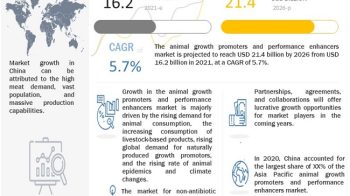A recent exciting opportunity to visit some cold chain warehouses and logistics organizations sparked in me an interest in understanding a different dimension of the HealthCare Industry. The visits suddenly brought to the forefront the fact that even if drugs, vaccines or diagnostics were manufactured in the very best, state-of-the-art facilities, under the most stringent quality standards and tested using the latest and best of technologies, what would happen if they are not transported under the correct conditions across the globe, or where they are most needed? Or were stored under improper conditions? What is the state in which they would reach the end-user, the patient and what would be the benefit?
The significance
With this came the realization that the continued success of any product also relies heavily upon the effective management of a ‘cold chain’ from the manufacturer right till the product reaches the consumer. Cold chain is a term used to describe a series of interdependent operations in the production, distribution, storage and retailing of pharmaceutical products. Control of the cold chain is vital to preserve both, the safety as well as the quality of products.
Indeed, earlier on, there have been several instances showing that temperature sensitive drugs, especially vaccines that were not shipped under the desired cold chain requirements were inactivated due to excess exposure to heat. People receiving such vaccines or drugs could well be under the false impression of being immunized, and carry a false sense of security which may be a greater risk. Today manufacturing organizations while dealing with large quantities of temperature sensitive products invest heavily in cold and supply chain infrastructure and management to improve the conditions in which vaccines and other lifesaving health commodities are transported and delivered across the globe. Organizations, such as the WHO, support with prequalification programmes for vaccines, cold chain equipment and other supplies (1).
Several pharmaceutical products are temperature sensitive for example vaccines, diagnostics, biologics among others. With the increase in the infectious disease burden along with the emergence of new strains, the demand for vaccines continues to grow steadily. According to a Markets and Markets report on vaccines, the market is expected to reach $57,885.4 million by 2019 from $33,140.6 million in 2014, at a CAGR of 11.8% (2). One of the major restraints to providing health to all is the distribution of vaccines to remote areas and making them accessible to all.
Cold chain storage and transport is undebatably a very crucial link in the entire chain of manufacturing of temperature sensitive medicines and diagnostics and their reaching the end-user without losing potency, efficacy, identity or strength – in other words uncompromised and integrity maintained. The past few years are witnessing a distinct shift in the Pharma Industry towards Biologicals which have gained wide acceptance. As a consequence, cold chain technologies are now an area of heightened interest in the pharmaceutical supply chain since all Biologics are usually temperature sensitive products. Biologics – whether they are biosimilars, biobetters or follow-on biologics – are all temperature sensitive, protein products.
The global biosimilars market is expected to reach $6.22 Billion by 2020 from $2.29 Billion in 2015, and is growing at a CAGR of 22.1% from 2015 to 2020 (3) according to a report by Markets and Markets. Human insulin, a leading biosimilar product, is a product whose demand has been witnessing steady growth. A report from Markets and Markets has defined that the global human insulin market crossed $23 billion in 2013 and is poised to grow at a high double-digit CAGR from 2014 to 2019 (4). With the Biologics market growing in leaps and bounds with new products constantly being launched, the cold chain technologies market is also growing simultaneously.
All elements involved in the cold chain – the people, machinery, vehicles on this long journey from manufacturer to consumer are an integral and indispensable part of the cold chain. Once a drug leaves the manufacturer’s premises, it could be shipped to the distributor anywhere across the globe, and the distributor in turn could ship it to a pharmacy or a hospital, where it is dispensed to the consumer- the patient. During its lengthy journey, temperature sensitive pharmaceuticals and biological products may end up changing hands numerous times and passing through several different environments. It is extremely important to the supplier to know whether or not it has been exposed to damaging higher temperatures or those that can degrade the quality of the product. In fact it is a regulatory matter!
Regulatory aspects
Cold-chain distribution, therefore, is a way to ensure patient safety and product integrity- quality and safety. Several global regulatory bodies enforce these requirements. Therefore, cold chain distribution requires regulatory compliance and is actually an extension of the GMPs. The guidelines involved include WHO documents on GDP (Good Distribution Practices) QAS/04.068 and GSDP (Good Storage and Distribution Practices). Other important guidelines that are being followed include. The US Pharmacopoeia (USP) standards are cited in <1079> as Good Storage and Shipping Practices. The International Committee for Harmonization (ICH) is in the process of harmonizing key documents (ICH Q1A (R2). Health Canada also has published guidelines to ensure that the drug products will reach the customer uncompromised. The Food and Drug Administration (FDA) Guidance on Stability for the industry highlights the fact that adverse shipping and/or environmental conditions may affect the product quality. Deficiencies in good distribution practices with specific focus on temperature control and monitoring during shipment have been cited by the FDA. The key concepts presented in the European Union Guidance on Good Distribution Practices include: “The quality system operated by distributors (wholesalers) of medicinal products should ensure that storage conditions are observed at all times, including during transportation” and “products requiring controlled temperature storage should also be transported by appropriately specialized means (5).
The overall objective of all the above guidelines is to “ensure the quality and integrity of pharmaceutical products during all aspects of the distribution process.” Globally, the Regulatory bodies put the complete responsibility of cold chain management with the manufacturer. They insist that temperature control and monitoring should be done following Risk Assessment and priority should be given to patient safety.
In order to comply with regulatory requirements and implement guidelines, a good Quality Management System becomes a necessity. Cold chains are best managed by a well-defined Quality Management System which is maintained efficiently by appropriate analyses, monitoring and measurement, controls, documents and validation. The processes are thereby evaluated and controlled. The underlying documentation is the most important key to compliance.
Critical processes
The processes involved in cold chain management impact the safety, efficacy or quality of the drug and therefore are designed after a thorough Risk Assessment and evaluation. These processes include storage, distribution and handling of temperature sensitive drugs and diagnostics/ medical devices. Beginning with the lay-out of the storage or warehousing site the processes and controls are streamlined towards compliance with GDP/ GSDP and are an extension of GMP. All processes are first mapped from product receiving procedures, to its put-away and storage under appropriate condition, to the receiving and execution of orders and the picking process which selects the ordered drugs, checking and packing of the picked material and dispatching the material under cold chain temperatures via approved transportation vendors to the customer. Many a times there are multiple modes of travel and multiple routes. These define the geographical scope of operations and they can make the process of reaching the final destination quite complex. The Risk involved at each stage is assessed and accordingly methods to control or mitigate risks are put in place. The shippers and transport vehicles used for transport are also part of this evaluation ensuring a safe delivery of the valuable inventory.
Establishing an efficient distribution process requires two critical processes to be completed. Firstly a process validation is done involving qualification of all the steps in the storage, distribution and shipping. It involves qualification of all equipment used in cold chain management such as refrigerators, chillers, shippers and containers and also packaging material and refrigerants used. These form the components of the cold chain system. Secondly temperature mapping studies of storage areas need to be done. These studies even include the various routes taken by transport vehicles and are undertaken to ensure that the integrity of the supply chain is maintained and temperature excursions do not occur on any route. Risks associated with distribution routes include exposure to temperature excursions, humidity, light and oxygen. An Operational Qualification (OQ) is done to demonstrate that the process performs at the operational temperature extremes like the summer season. Performance Qualification (PQ) is also done to demonstrate that what happens in the real world is within the limits of what was demonstrated in the Operational Qualification limits. These validations must meet GMP, GDP, CFR 21, WHO, MHRA, FDA and HACCP requirements.
Temperature mapping is a process of mapping temperatures of chillers, cold rooms and temperature controlled storage spaces such as the 15-25 C and also the ambient storage areas, which typically go to make up any warehousing and storage facility. It is an important process since fluctuations in storage temperature exposes products to high temperatures which can damage them. The mapping process involves dividing the entire area into mapping zones based on the length, breadth, volume of the area being mapped and placing at strategic points around fifteen temperature data loggers recording temperature continuously over the study period, usually seven days. This provides information on whether temperature is maintained uniformly throughout the room or whether there are gradients. These records are analyzed to identify a hot spot and cold spot which are the most critical areas that need to be monitored continuously real-time since temperature excursions are most likely in these areas. They are linked to an alarm system which triggers response immediately bringing necessary attention and action. Temperature probes or data loggers are used for the continuous measurement and monitoring of temperatures within the product load during shipment of material. Typically refrigerated cars or reefers, vans, trucks are used for road transportation. The material may also be transported via railways, air and sea routes. The temperature probes provide a temperature record right through the shipment. Temperature recording is started at the beginning of a shipment, stopped at the end, and uploaded manually to a PC to provide a complete time and temperature history of the transport duration.
Recently more complex data loggers have become available in the market. They measure temperature, humidity and other parameters if required. Some of these may have GPS capability thereby making real-time tracking and reporting possible. Some can communicate via RFID thus simplifying data acquisition. Newer software solutions are available to capture and track all of the information from data loggers. Web based tracking systems provide electronic tracking. So it is now possible to obtain the real time status of material in transit.
Changing product portfolios, requirements for good storage and distribution practices, regulatory trends, quality management, and risk assessment factors bring many challenges to pharmaceutical cold chain management and the new trends and changes in technology try to overcome these challenges.
New trends
Some exciting new and sophisticated technologies in cold chain management are all set to revolutionize this field and bring about significant change in the way distribution occurs! Smartphone Apps, RFID, infrared, GPS technologies and many more are gaining quick acceptance and have become an everyday matter. Sophisticated tracking software is now available which facilitates easier and faster delivering of shipments, managing schedules, monitoring cargo, planning routes and avoiding delays, all in real-time. The real-time monitoring systems are specifically designed to monitor environmental conditions of thermal equipment and storage facilities, such as laboratories, manufacturing, packaging, transportation and storage areas. The result is faster, cheaper and more sustainable circulation of goods (9).
Some advanced logistics technologies just round the corner include the robotization of the warehouse where robots are actually doing the Picking Process, the most tedious process in warehousing and distribution logistics. Robots are now being used in Amazon’s U.S. warehouses, picking up goods and reducing the distance human workers have to walk to find products. Secondly, wearable digital systems or “augmented reality” are considered to be the next big advance, again for helping the picking process and trying to reduce costs. Lastly, trucking companies are trying to develop apps for uberization of the trucks (2). The “uberization” of trucks refers to the application of software to facilitate the load-matching process.
The ultimate aim being reaching drugs safely from the manufacturer to a consumer in any corner of the world!
References
- http://www.who.int/immunization_standards/vaccine_quality/pqs_prequalified_devices/en/
- Vaccines Market by Technology http://www.marketsandmarkets.com/Market-Reports/vaccine-technologies-market-1155.html
- Biosimilars report: http://www.marketsandmarkets.com/Market-Reports/biosimilars-40.html
- Human Insulin: http://www.marketsandmarkets.com/PressReleases/human-insulin.asp
- Cold Chain Management – An Essential Component of the Global Pharmaceutical Supply Chain Rafik H. Bishara, Ph.D. January/February 2006 issue of American Pharmaceutical Review.
- http://www.foodlogistics.com/news/12128311/tech-trends-directing-global-logistics-uberization-of-trucking-robotization-of-the-warehouse-augmented-reality.
- WHO Technical Supplement. Temperature mapping of storage areas
- ISPE Good Practice Guide – Cold Chain Management (2011)
- RTLS systems: http://www.marketsandmarkets.com/Market-Reports/real-time-location-systems-market-1322.html
The writer, Dr. Anita Joshi is a Biotechnology Advisor for Markets and Markets, India.
Providing exclusive insights into high-growth niche markets.
Syndicated Market Research Reports | Custom Market Research |
Consulting Services | Outsourced Market Research



